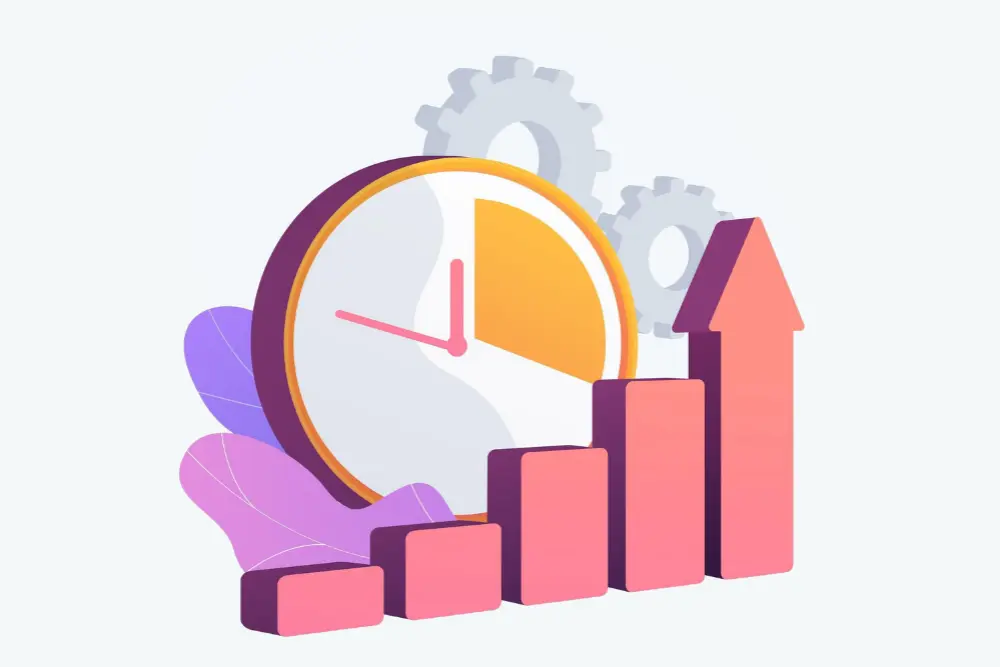Physical Address
304 North Cardinal St.
Dorchester Center, MA 02124
Physical Address
304 North Cardinal St.
Dorchester Center, MA 02124

9 Proven Strategies to Identify Your Peak Productivity Hours
Imagine unlocking your full potential by discovering your peak productivity hours—the moments when your mind and body perform at their best. Identifying your peak productivity hours is more than just a time management hack; it’s a transformative strategy for achieving greater efficiency, satisfaction, and balance in daily life. For individuals navigating busy schedules, understanding their peak productivity hours can lead to remarkable improvements in focus and output.
Peak productivity hours are those golden times during the day when your focus sharpens, your energy peaks, and your efficiency soars. By identifying these periods, you can align your most critical tasks with your natural rhythms, maximizing results while minimizing effort. Without this awareness, you risk working against the grain, wasting precious energy, and falling short of your full potential.
When you tailor your schedule to align with your peak productivity hours, the benefits are immediate and tangible. Challenging tasks become more manageable as your clarity and motivation synchronize. You eliminate wasted effort during low-energy periods and direct your focus to what truly matters. This simple yet powerful approach not only enhances work efficiency but also fosters a profound sense of accomplishment and balance in your day-to-day routine.

Productivity rhythms refer to the natural fluctuations in your energy levels and cognitive performance throughout the day. These rhythms are deeply personal, varying from person to person based on genetics, lifestyle, and environmental factors. Recognizing these patterns allows you to work with, rather than against, your natural flow.
At the core of productivity rhythms lies the circadian cycle, a 24-hour biological clock governing sleep, energy levels, and alertness. This cycle is influenced by external cues such as light, meal times, and activity. Understanding the science behind these rhythms helps demystify why certain hours feel more productive while others lead to lethargy.

When you’re operating at your peak, thoughts flow effortlessly, and tasks requiring deep concentration become less daunting. This mental clarity is a hallmark of optimal productivity.
A strong indicator of peak performance is sustained energy coupled with a remarkable ability to resist distractions. These periods often feel like being “in the zone,” where external disruptions fail to deter progress.
During peak hours, tasks that usually demand significant effort are completed with speed and precision. This efficiency stems from being fully attuned to the task at hand.

Chronotypes—your natural tendency to wake early or stay up late—play a pivotal role in determining your peak hours. Early birds thrive in the morning, while night owls hit their stride later in the day. Understanding your chronotype is the first step to optimizing your schedule.
The infamous midday slump, often occurring after lunch, is a natural dip in energy levels caused by circadian rhythms. Knowing how to navigate this period can help you remain productive without overexerting yourself.

Here is a curated list of notable time-tracking applications and software, each offering unique features to cater to various productivity and project management needs:
Keeping a journal to track your energy fluctuations and task outcomes is a powerful method for uncovering consistent trends in your productivity patterns. By recording how you feel and perform throughout the day, you can identify the times when your energy peaks and dips, offering insights into when you’re most productive. Whether you choose a simple notebook or a structured planner, the act of documenting this information creates a valuable record that helps you make informed decisions about optimizing your schedule. Over time, this practice becomes an essential tool for aligning your tasks with your natural rhythms and achieving greater efficiency.
Wearable tech like fitness trackers can monitor sleep, activity, and energy levels, offering a comprehensive view of your peak productivity hours and overall productivity patterns.

Begin by tracking your energy levels and productivity every hour for an entire week. This meticulous approach provides granular data that highlights when you naturally excel and when you face challenges. By documenting your performance across different periods, you create a clear map of your daily rhythms.
Once you’ve gathered this data, analyze it to pinpoint peaks and troughs in your energy levels. Look for recurring patterns that reveal your body’s natural preferences. For example, you might notice a consistent burst of focus in the morning or a dip in concentration after lunch. These trends provide valuable insights into your productivity cycles.
To refine your understanding, experiment with different task types during various times of the day. Try tackling creative work when your energy feels high, analytical tasks when your focus is sharp, and physical activities during moments of moderate alertness. This experimentation helps you identify the times when specific activities feel most effortless, enabling you to align your schedule with your strengths.

What you eat and drink has a profound impact on your energy. Balanced meals and adequate hydration help sustain peak productivity and performance throughout the day.
Consistent, quality sleep is foundational for productivity. Irregular sleep disrupts your circadian rhythm, making it harder to identify and utilize your peak hours.
Workspace conditions—lighting, noise levels, and temperature—can enhance or hinder productivity. Tailoring your environment to your needs is essential for peak performance.

To maximize your productivity, prioritize high-impact tasks during your peak energy hours. These periods are when your focus is sharpest, your energy is at its highest, and your ability to tackle challenging or complex tasks is unparalleled. Use these prime moments for work that demands deep concentration, problem-solving, or creativity. By aligning significant responsibilities with your natural strengths, you can achieve better results with less effort and frustration.
During low-energy periods, reserve your time for routine or less critical tasks that require minimal cognitive effort. Activities like organizing files, responding to emails, or planning the next day’s schedule are perfect for these dips in productivity. This strategic delegation of tasks not only conserves your energy but also protects your peak hours for work that truly matters. By thoughtfully matching tasks to your energy levels, you can maintain steady progress throughout the day while avoiding burnout.

Life is filled with unexpected interruptions, and no schedule is immune to disruptions. Whether it’s an urgent task, an unplanned meeting, or personal obligations, the key to maintaining productivity lies in building flexibility into your routine. By leaving buffer times between tasks and practicing a mindset of adaptability, you can respond to these interruptions without derailing your overall workflow. Prioritizing your high-impact tasks early in your peak hours also provides a cushion for unforeseen events later in the day.
In addition to short-term flexibility, it’s essential to recognize and adjust for long-term changes in your productivity rhythms. Circadian patterns can shift due to aging, evolving responsibilities, or significant lifestyle changes like a new job or becoming a parent. Regularly revisiting your tracked data and observing how your energy patterns evolve ensures your strategies remain effective. Embracing this adaptability helps you stay aligned with your natural rhythms, no matter how they change over time. This proactive approach ensures that your productivity plan remains a powerful tool for success, even in the face of life’s unpredictability.

Procrastination often takes root during low-energy periods, when tasks feel overwhelming or motivation wanes. To counter this, break larger tasks into smaller, more manageable steps. Tackling one step at a time makes the process less daunting and creates a sense of achievement with each milestone. Celebrate these small victories to maintain momentum and reinforce a positive attitude toward completing your work. Additionally, setting clear, achievable goals for each task can provide direction and help you stay on track, even when motivation dips.
To make the most of your peak productivity hours, it’s crucial to defend these windows against distractions. Create a focused work environment by minimizing interruptions—turn off unnecessary notifications, set boundaries with colleagues or family, and designate a quiet space for concentration. Employ techniques like time-blocking to allocate specific periods for deep work, ensuring that your peak hours are reserved for tasks that require maximum focus. These strategies not only help you stay productive but also prevent distractions from diminishing the value of your most valuable working periods. By addressing procrastination and distractions simultaneously, you can maintain consistent progress and achieve your goals more efficiently.
Embracing productivity awareness is not a one-time effort but an ongoing commitment to self-awareness and continuous improvement. By understanding and honoring your peak productivity hours, you can unlock new levels of efficiency and well-being. Start today by observing your energy patterns and making small adjustments to align your tasks with your natural rhythms. Even minor changes can lead to transformative results, setting you on a path to realizing your true potential.